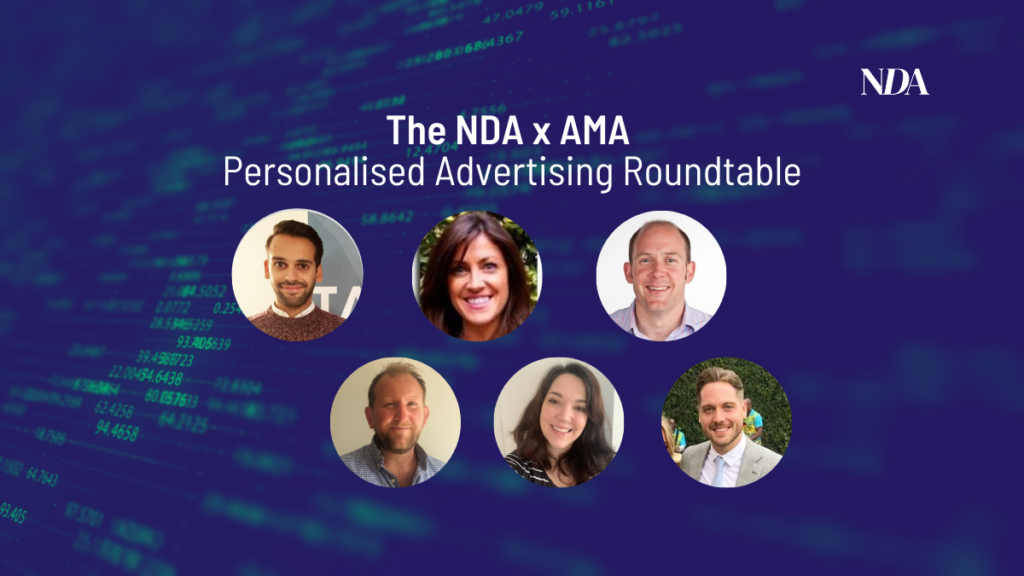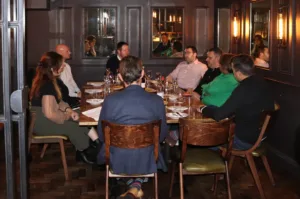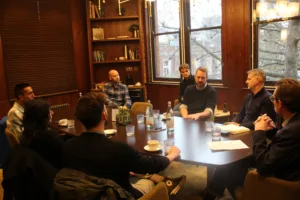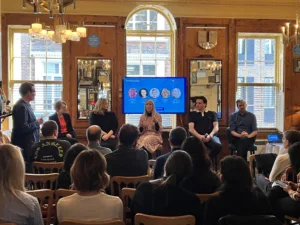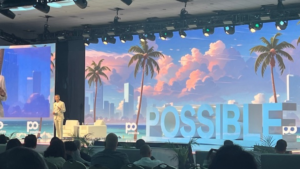NDA, in partnership with A Million Ads, recently held a roundtable to discuss personalisation within digital audio. We heard insights from Charlie Brookes, Chief Revenue Officer, Digital Audio UK at Bauer Media; Josh Woodhouse, UK Director of Sales at Acast; Maria Cadbury, Director of Strategic Partnerships at Say It Now; Shanil Chande, UK Commercial Director at Hawk, and Richard Williams, Commercial Director, and Sophie Taylor, Partnerships Director, at A Million Ads.
Personalisation has been a hot topic in recent times, particularly with the upcoming deprecation of third-party cookies on Google’s Chrome browser. On the other side of that, we’ve seen tremendous growth within the digital audio space over the past couple of years, with many people now owning smart speakers, consuming podcasts, and listening to the radio again – where listens are, in fact, higher than they’ve ever been before.
Audio opportunity
Luckily for advertisers, digital audio already presents several cookieless opportunities to reach consumers in a relevant and personalised way, without ever having to use any questionable tactics to do so.
Looking at digital audio as a whole, A Million Ads’ Williams sees the medium as offering up the opportunity to drive efficiencies for clients, especially in the current climate.
“With the current status of product shortages, it’s really tricky to record an advert around offers, only to then realise that the item is out of stock and it’s pointless to have that advert,” explained Williams. “We have a lot of campaigns at the moment where we record multiple offers for clients, and they then use those throughout the year, instead of recording different offers every month. We can use clever technology to figure out what’s in stock, or how many appointments there are, and things like that, so that you’re not constantly recording new pieces of copy.”
For Say It Now’s Cadbury, audio – and the power of voice in particular – provides a platform to have a ‘direct’ conversation with the consumer. This is none more evident than in smart speakers, where consumers are literally conversing with the technology.
“We’re deeply passionate about personalisation, because we’re using voice, and you have the opportunity to have a conversation between the brand and the customer,” said Cadbury. “This is the rising tide of a new channel, which is voice, where it’s going to be huge.
“If you look at our partnership with A Million Ads and Hawk, we’re looking at contextual audio, dynamic personalisation, and all this coming together between the audio and the creative into the human speaking to the brand directly.”
Similarly – and yet so different – to advertising through smart speakers is through podcasts, where voice is just as powerful, just not so much from the consumer.
One opportunity for personalised ads in podcasts comes through products such as Acast’s Dynamic Sponsorships, which enables brands to sponsor podcasts but tailor the message based on things like location.
“Sponsorships are the lifeblood of podcasting. When you listen to a show, you have the host endorse something to you, which feels relevant. However, we now have the ability to look at working with the same influential voices, but delivering a completely unique piece of creative based on either rotation, device, or location,” said Acast’s Woodhouse. “That’s certainly one of the coolest ways that we have been developing that space. And anything we can do to continue to utilise the power of talent is going to be beneficial.”
Embracing the opportunity
However, the capabilities on offer within digital audio are still relatively new to many advertisers and creatives so, at times, there is a lack of understanding about what’s possible, or even why they want to use dynamic personalisation on a campaign.
“I can’t tell you the number of times that we’ve received a brief, and they’ve said they want to use dynamic on this or they want to use personalisation on it, without understanding what they’re trying to personalise and what data points they want to use,” Hawk’s Chande shared. “It’s personalisation for personalisation’s sake. Don’t get me wrong, it’s great for the end user – but what are we actually trying to achieve, and why are we trying to achieve it?
“It’s about having a really clear understanding of the goals and what the benefits are to running personalisation on something, because that’s where the conversation about cost versus efficiency comes in.”
On the other hand, from Brookes’ experience, most of Bauer’s clients – through their Octave joint venture with News UK’s Wireless – seem to understand personalisation.
“They’re interested in who they can target and what segments, and then the creative that they then serve to those people. You can really sense people trying to work out how they use the medium to zone in on specific audiences to get them to do specific things,” said Brookes. “It’s what digital planners have done for years, but being able to do it in audio is quite an exciting proposition. So, that’s where it starts with us: target the ad, get the segment, and then give them something that is more likely to produce the action you want.”
Either way, however much a client may know about personalisation, sometimes they can get carried away with what they want to do for a campaign, and overcomplicate things.
“When you get too complex, it can sometimes end up having a negative effect. We have seen that happen with some campaigns, but that’s a learning experience, where you realise that maybe you need to strip it back and go from a couple of data points, rather than going a bit too complex,” said A Million Ads’ Taylor. “That’s the beauty of dynamic: you can take a lot of those different learning experiences and feed it into future activity.”
*A Million Ads is a client of Bluestripe Communications, owned by Bluestripe Group, the owner of NDA.


